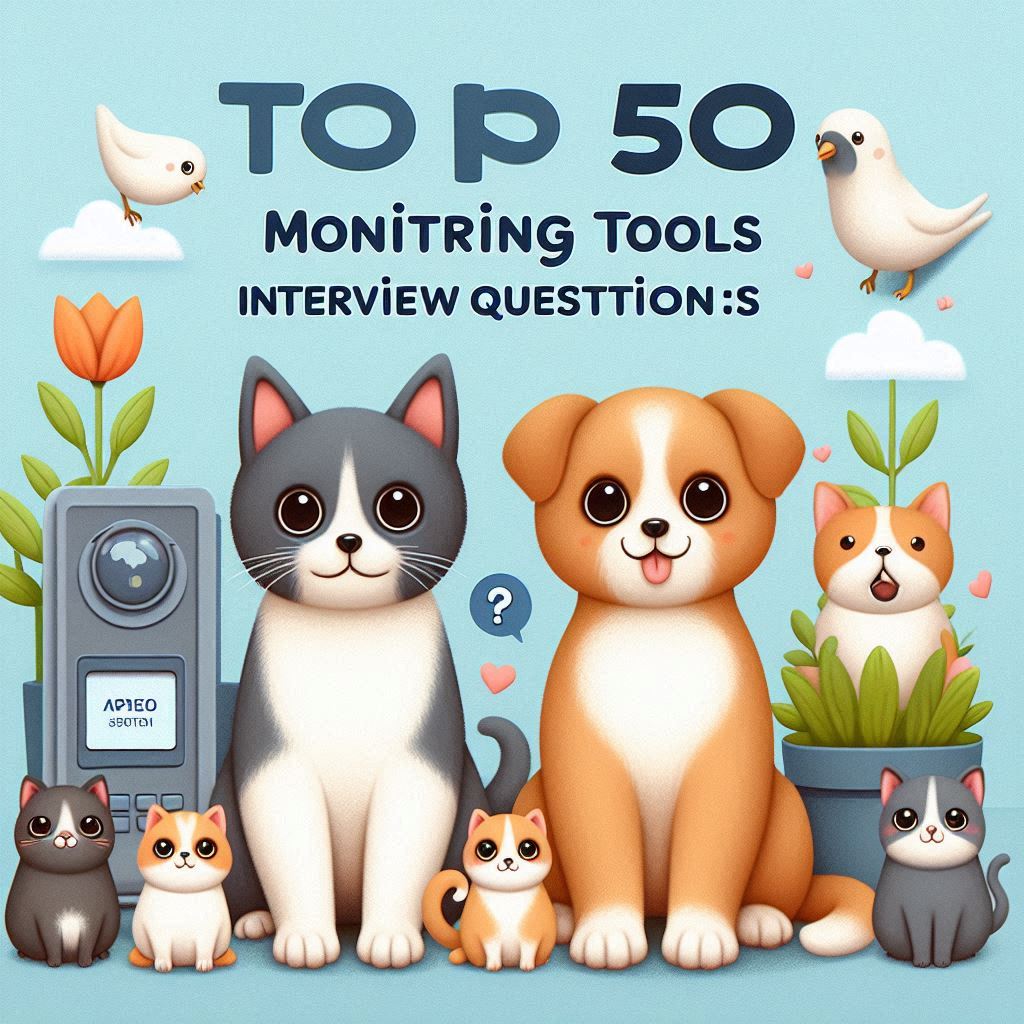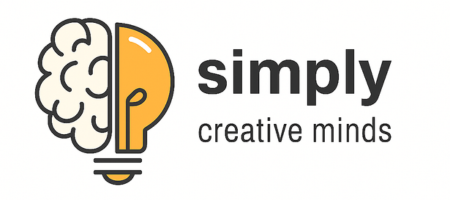
1. What is monitoring in IT?
Answer:
Monitoring is the continuous process of collecting, analyzing, and using information to track the performance and health of systems, applications, and infrastructure.
2. Why is monitoring important?
Answer:
Monitoring helps detect issues early, ensures system reliability, optimizes performance, and supports capacity planning.
3. What are the different types of monitoring?
Answer:
- Infrastructure Monitoring
- Application Performance Monitoring (APM)
- Network Monitoring
- Security Monitoring
- Log Monitoring
4. What is Prometheus?
Answer:
Prometheus is an open-source systems monitoring and alerting toolkit designed for reliability and scalability.
5. What is Grafana?
Answer:
Grafana is an open-source analytics and monitoring platform used to visualize time-series data and metrics from various data sources.
6. How do Prometheus and Grafana work together?
Answer:
Prometheus collects and stores metrics data, while Grafana queries Prometheus and visualizes that data via dashboards.
7. What is Nagios?
Answer:
Nagios is a widely-used open-source monitoring system for network and infrastructure monitoring with alerting capabilities.
8. What is Zabbix?
Answer:
Zabbix is an open-source monitoring solution for networks, servers, cloud services, and applications.
9. What is an alert in monitoring?
Answer:
An alert is a notification triggered when a monitored metric crosses a predefined threshold indicating a potential issue.
10. What is the difference between metrics, logs, and traces?
Answer:
- Metrics are numerical data points over time.
- Logs are detailed event records.
- Traces track the flow of requests through distributed systems.
11. What is Application Performance Monitoring (APM)?
Answer:
APM tools track and analyze the performance of software applications, including response times, throughput, and error rates.
12. Name some popular APM tools.
Answer:
New Relic, Dynatrace, AppDynamics, Datadog APM, Elastic APM.
13. What is the ELK Stack?
Answer:
ELK stands for Elasticsearch, Logstash, and Kibana — a stack for centralized logging and log analysis.
14. What is the difference between agent-based and agentless monitoring?
Answer:
- Agent-based monitoring uses software agents installed on target systems.
- Agentless monitoring collects data remotely without agents.
15. What are the key features to look for in monitoring tools?
Answer:
Real-time data collection, alerting, dashboard visualization, scalability, integrations, and ease of use.
16. What is the role of a time-series database in monitoring?
Answer:
It stores and retrieves time-stamped metric data efficiently, enabling trend analysis and alerting.
17. What is a dashboard in monitoring?
Answer:
A dashboard is a visual interface displaying metrics, logs, and alerts to provide insights into system health.
18. What is synthetic monitoring?
Answer:
Synthetic monitoring simulates user interactions with applications to test performance and availability proactively.
19. What is real user monitoring (RUM)?
Answer:
RUM collects data from actual users to analyze application performance and user experience.
20. How do you handle false positives in monitoring?
Answer:
By fine-tuning alert thresholds, using anomaly detection, and validating alerts before escalation.
21. What is PagerDuty?
Answer:
PagerDuty is an incident management platform that integrates with monitoring tools to manage alerting and on-call scheduling.
22. What is the difference between push and pull models in monitoring?
Answer:
- Push: monitored systems send metrics to the monitoring server.
- Pull: monitoring server queries systems for metrics at intervals.
23. What is Sensu?
Answer:
Sensu is a scalable monitoring platform for infrastructure, applications, and services with built-in alerting.
24. How does monitoring help in capacity planning?
Answer:
By providing data on resource usage trends, enabling forecasting and proactive scaling.
25. What is threshold-based alerting?
Answer:
An alert is triggered when a metric exceeds or falls below a set value.
26. What is anomaly detection in monitoring?
Answer:
Automatically identifying unusual patterns or deviations in metric data.
27. What is a service level agreement (SLA)?
Answer:
A contract that defines the expected level of service, often monitored using uptime and performance metrics.
28. What is the difference between uptime and availability?
Answer:
- Uptime is the total time a system is operational.
- Availability is uptime expressed as a percentage of total planned operational time.
29. What is Splunk?
Answer:
Splunk is a platform for searching, analyzing, and visualizing machine-generated big data, often used for log monitoring.
30. What is Datadog?
Answer:
Datadog is a cloud monitoring and analytics platform for infrastructure, applications, and logs.
31. What is OpenTelemetry?
Answer:
OpenTelemetry is an open-source observability framework for collecting traces, metrics, and logs.
32. What is the difference between black-box and white-box monitoring?
Answer:
- Black-box monitors external behavior without insight into internals.
- White-box has access to internal application metrics and states.
33. What are some common monitoring challenges?
Answer:
- Alert fatigue
- Data overload
- False positives
- Integration complexity
34. What is a service map in monitoring?
Answer:
A visual representation of interdependencies between services in an infrastructure.
35. How do you monitor cloud infrastructure?
Answer:
Using cloud-native tools (CloudWatch, Azure Monitor), third-party platforms, and APIs to collect metrics and logs.
36. What is synthetic transaction monitoring?
Answer:
Running scripted transactions to test application performance under simulated user activity.
37. How do monitoring tools integrate with incident management?
Answer:
By sending alerts to incident response platforms like PagerDuty or Opsgenie to automate response workflows.
38. What is the role of logs in monitoring?
Answer:
Logs provide detailed event data for troubleshooting and forensic analysis.
39. What is the significance of metadata in monitoring data?
Answer:
Metadata adds context like source, service, and environment to raw metrics and logs.
40. What is distributed tracing?
Answer:
Tracking the flow of requests across multiple services to diagnose latency or failures in microservices.
41. What is the difference between active and passive monitoring?
Answer:
- Active monitoring probes systems actively with tests.
- Passive monitoring listens for data emitted by systems.
42. What is the role of APIs in monitoring tools?
Answer:
APIs enable integration, data extraction, and automation between monitoring systems and other platforms.
43. How do you monitor databases?
Answer:
By tracking query performance, resource usage, connections, and error rates using specialized tools or plugins.
44. What is cloud-native monitoring?
Answer:
Monitoring designed specifically for cloud environments and architectures like containers and serverless.
45. What is threshold tuning?
Answer:
Adjusting alert thresholds to balance sensitivity and reduce false alarms.
46. What are some open-source monitoring tools?
Answer:
Prometheus, Grafana, Nagios, Zabbix, Sensu, ELK Stack.
47. What is the importance of scalability in monitoring tools?
Answer:
Scalability ensures monitoring can handle growth in systems, data volume, and users without performance loss.
48. What is Logstash?
Answer:
Logstash is a data processing pipeline that ingests, transforms, and forwards log data to a storage or analysis system.
49. What are metrics tags/labels?
Answer:
Tags or labels add dimensions to metrics, enabling filtering and aggregation by attributes like host or service.
50. What is the difference between health checks and monitoring?
Answer:
Health checks are simple probes to verify system availability, while monitoring is a continuous, comprehensive data collection and analysis process.


